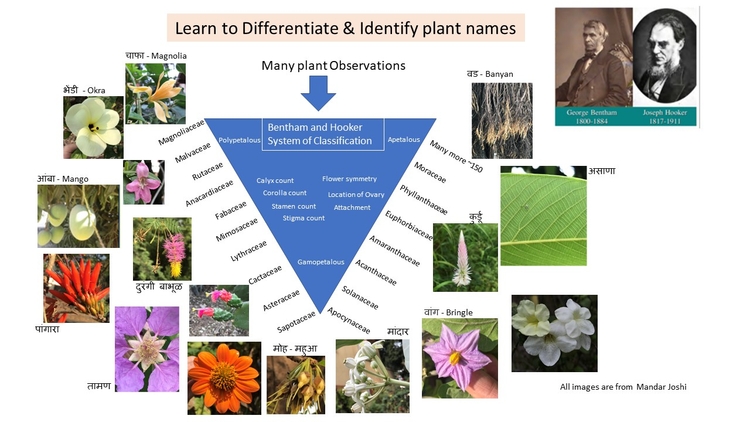Learn to observe: During those three months, we had many 'Tree Walks' around Pune city. Although I had been to those places before, viewing them through botanical ‘spectacles’ was an altogether different experience. The plants that surrounded me till date, were looking different now. They were behaving differently and communicating entirely different language!
Understanding 'Plant Morphology' was the first step. Recognizing different types of leaves, structure of inflorescence and various flower parts was a very intriguing and to some extent, a very daunting task.

Learn to differentiate & identity plant names: 'Differentiation' is a key aspect in the process of 'identifying' a plant. Bentham and Hooker classification system has categorized global plant species, based on floral part characters. Out of about 3 lac flowering plants in the world, about 18000 are in India. These numbers are enough to give a sense of complexity and intricacy involved in this classification process and to fathom the diversity in nature. Plants with similar floral characters are first grouped into 'family' and then sub grouped into 'genus' & 'species'. It's like a funnel which spits out a plant name after sieving it through a hugely complicated filter.

This apparently simple logic to Identify plants can be tricky and exhaustive for amateur observer like me. Contradictory information in various books or websites, difficult botanical terms and complex descriptions in floras were some of the roadblocks. Still in most of cases, I could decipher the name and learned the tricks of the trade.

 Mandar Joshi
Mandar Joshi 





